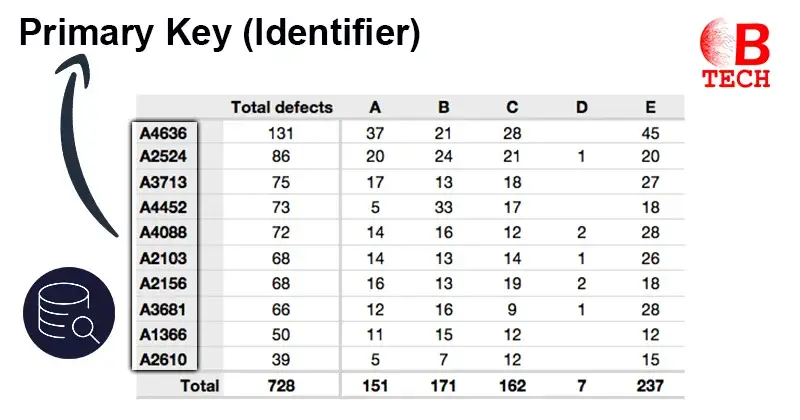What Does “Primary Key” Mean?
A primary key serves as a special column or a combination of columns in a relational database table, designed to uniquely identify each record in the table. This identifier helps to swiftly navigate and manage data within the table. Importantly, a table is restricted to having only one primary key.
Characteristics of a Primary Key
- Uniqueness: Each row in the table must have a primary key that is unique. This ensures that each record can be distinctly identified.
- Non-Nullable: The primary key field cannot be left empty, it must always have a value.
- Mandatory Value: Every row of data in the table must include a primary key value to ensure that each record is accessible and identifiable.
- Configuration: The primary key may consist of one or more fields that already exist in the data model. Alternatively, a new field can be specifically created to serve as the primary key.
Techbonafide Explains Primary Key
“Primary keys are the cornerstone of database integrity, they are the unique identifiers that ensure each piece of data stands alone, unambiguous and accessible in the vast maze of information.”
The Role of Primary Keys in Relational Databases

Primary keys are essential for the smooth operation of relational databases. They enable databases to uniquely identify each record, a necessity when tables can hold thousands of entries, including duplicates.
Natural Vs Surrogate Primary Keys
Primary keys derived from real-world observations and attributes are known as natural primary keys. In contrast, surrogate primary keys are artificially assigned to each record. Many people regularly use natural primary keys in everyday situations without realizing it.
Examples of Natural Primary Keys
For instance, schools assign unique ID numbers to students, and the U.S. government assigns Social Security numbers to citizens, both serving as unique identifiers. Similarly, street addresses and driver’s license numbers act as primary keys, identifying locations and vehicle owners, respectively.
Practical Application in Commercial Banks
Consider a commercial bank that stores its data in databases including tables like CUSTOMER_MASTER for customer details and ACCOUNTS_MASTER for account information. To ensure each customer is uniquely identified, the database may initially consider using Social Security numbers. However, if not all customers have one, this option is not viable.
Instead, the database might attempt to use a combination of surname, date of birth and email address as a primary key. This method, however, can be cumbersome and inefficient.
Optimal Primary Key Solutions
The most efficient solution often involves creating a new column specifically for a primary key, such as CUSTOMER_ID. This column automatically generates a unique number for each new customer, ensuring unique identification.
When creating the table in SQL, this column is designated as the primary key, and the database is set up to reject any null values in this column.
Benefits of Using Primary Keys
This setup enhances the security and efficiency of handling customer inquiries. For example, when a customer named Smith calls in a search using just the surname might return multiple entries. However, searching by CUSTOMER_ID guarantees a single, specific result, thanks to the uniqueness of the primary key.



